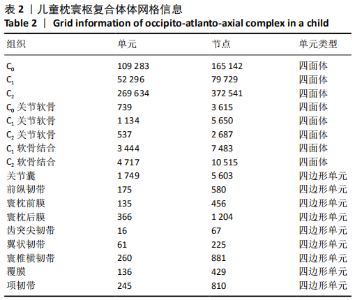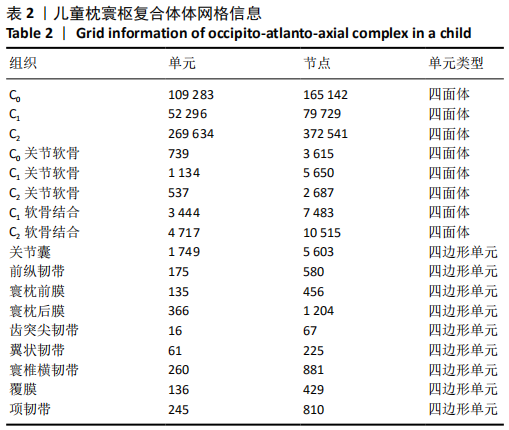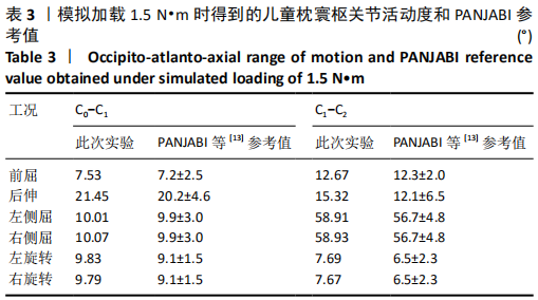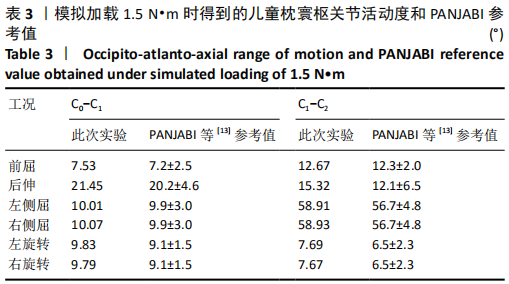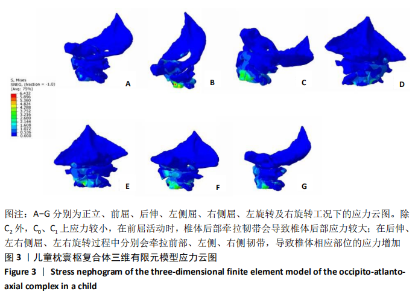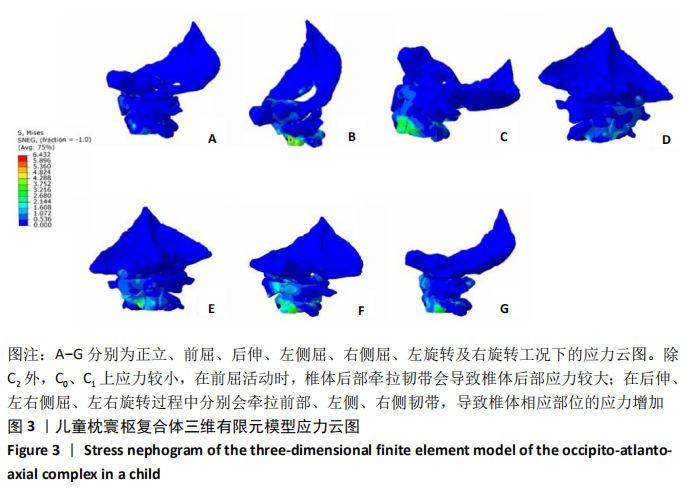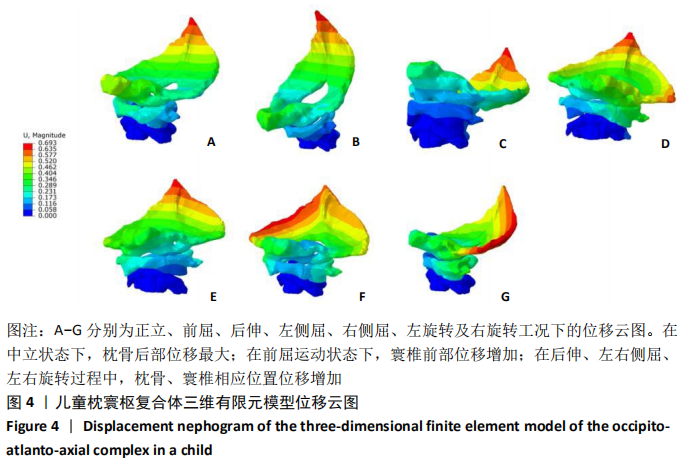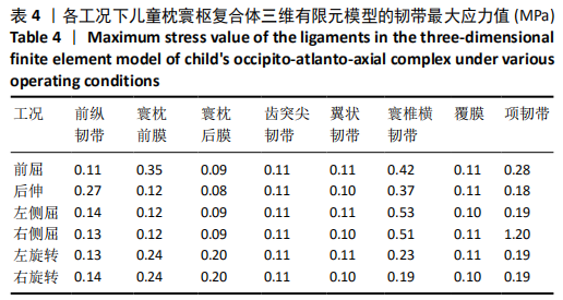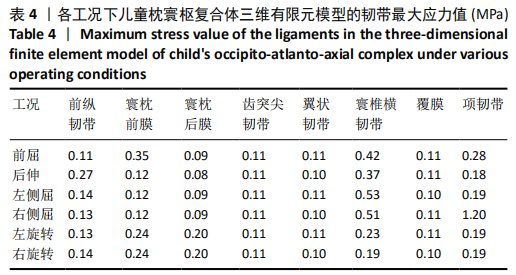[1] 冯会梅,王星,张少杰,等.有限元法分析0-6岁儿童枕寰枢复合体发育及其生物力学的变化特征[J].中国组织工程研究,2018, 22(23):3710-3715.
[2] 于永涛,张少杰,刘颖,等.学龄期儿童寰枢椎数字化三维形态测量研究[J].中国脊柱脊髓杂志,2017,27(1):69-74.
[3] 李琨,李志军,张少杰,等.1-6岁儿童枢椎经椎板螺钉内固定的可行性研究[J].中国临床解剖学杂志,2020,38(2):166-170.
[4] BELYTSCHKO T, KULAK RF, SCHULTZ AB, et al. Finite element stress analysis of an intervertebral disc.J Biomech. 1974;7(3):277-285.
[5] LIU YK, RAY G, HIRSCH C.The resistance of the lumbar spine to direct shear. Orthop Clin North Am. 1975;6(1)33-35.
[6] 冯会梅,刘路,张少杰,等.有限元动态仿真建立8岁儿童颈椎关节突关节模型[J]中国组织工程研究,2019,23(32):5181-5187.
[7] 吴俊,李俊义,曹立波,等.基于网格变换技术的9岁儿童C4-C5颈椎有限元模型开发与验证[J].湖南大学学报,2018,45(4):26-33.
[8] 任中武,倪斌.上颈椎三维非线性有限元模型的建立及其有效性验证[J].脊柱外科杂志,2007,5(3):159-162.
[9] 陈金水,倪斌.寰枢椎脱位三维非线性有限元模型的建立和分析[J].中国脊柱脊髓杂志,2010,20(9):749-753.
[10] KABEL J, VAN RIETBERGEN B, DALSTRA M, et al. The role of an effective isotropic tissue modulus in the elastic properties of cancellous bone. J Biomech. 1999;32(7):673-680.
[11] KUMARESAN S, YOGANANDAN N, RANK FA, et al. Biomechanical Study of Pediatric Human Cervical Spine: A Finite Element Approach.J Biomech Eng. 2000;122:60-71.
[12] YOGANANDAN N, KUMARESAN S, VOO L, et al. Finite element application in human cervical spine modeling. Spine (Phila Pa 1976). 1996;21(15):1824-1834.
[13] PANJABI MM, CRISCO JJ, VASAVADA A. Mechanical properties of the human cervical spine as shown by three-dimensional load-displacement curves. Spine (Phila Pa 1976). 2001;26:2692-2700.
[14] BREKELMANS WA, POORT HW, SLOOFF TJ.A new method analysis the mechanical behaviour of skeletal parts. Acta Ortho Scand. 1972; 43(5):301-317.
[15] 李广州,刘浩,杨毅.有限元方法在人工颈椎间盘置换生物力学研究中的应用进展[J].实用骨科杂志,2020,26(2):140-143.
[16] 许铎,孙锐坚,王天宇,等.基于有限元生物力学分析的股骨远端A型骨折探索与再思考[J].中华外科杂志,2019,57(11):812-817.
[17] 曹立波,周舟,蒋彬辉,等.10岁儿童头部有限元模型的建立及验证[J].中国生物医学工程学,2014,33(1):64-66.
[18] 席焱海,叶晓健,何海龙.下颈椎双侧关节突交锁三维有限元模型的建立和验证[J].中华医学杂志,2014,94(1):47-50.
[19] 康永强,吴永伟,马运宏,等.正常掌指关节三维有限元模型的建立及生物力学分析[J].中华手外科杂志,2019,35(5):364-367.
[20] 陈建清,赵刘军,祁峰,等.颈椎两节段椎体次全切后前路椎弓根螺钉固定的生物力学有限元研究[J].中华实验外科杂志,2016,33(4): 1067-1071.
[21] YANG KH, ZHU F, LUAN F, et al. Development of a finite element model of the human neck.Proceeding of the 42nd Stapp Car Crash Conference. 1998;1(11):105-108.
[22] JOST R, NURICK GN.Development of a finite element model of the human neck subjected to high level deceleration. Int J Crashworthiness. 2000;5(2):259-267.
[23] BROLIN K, HALLDIN P.Development of a finite element model of the upper cervical spine and a parameter study of ligament charateristics. Spine (Phila Pa 1976). 2004;29(4):376-385.
[24] RINCHEN BS, MARCUS D. Development and initial evaluation of a finite element model of the pediatric craniocervical junction. J Neurosurg Pediatr. 2016;17:497-503.
[25] 史斌.上颈椎有限元模型的建立与分析,以10岁儿童为例[J].基因组学与应用生物学,2017,36(8):3447-3452.
[26] Luck JF,Ph D.Tensile Failure Properties of the Perinatal, Neonatal, and Pediatric Cadaveric Cervical Spine.Cervical Spine. 2012;38(1):1-12.
[27] 陈群响,倪斌,郭群峰,等.带肌肉组织全颈椎三维有限元模型的建立及分析[J].中国脊柱脊髓杂志,2019,29(4):348-355.
[28] 谢天浩,卢玉昭,王在贵,等.带有枕骨全颈椎三维有限元模型的构建及生物力学分析[J].中国临床神经外科杂志,2019,24(11): 681-684.
[29] 刘治华,汤清,陶德岗,等.全颈椎三维有限元模型的建立及旋转牵引疗法研究[J].生物医学工程研究,2018,37(3):362-366. |
